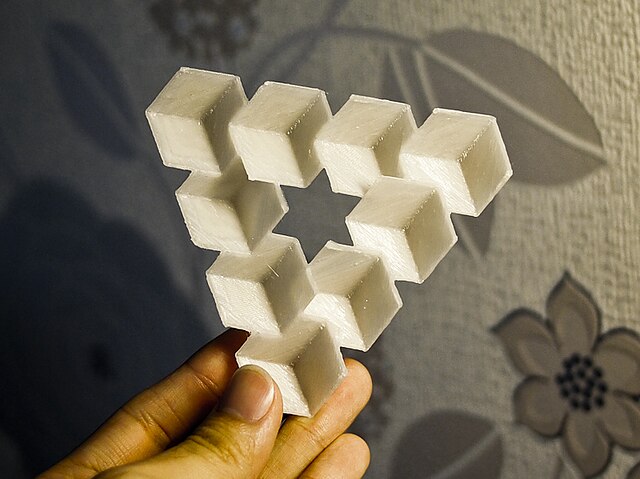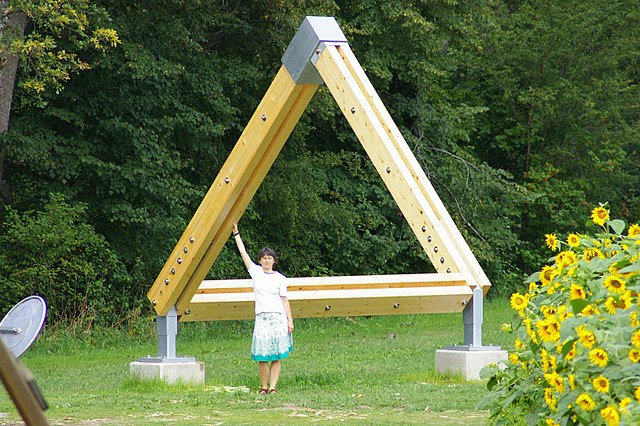The Penrose triangle, also known as the Penrose tribar, the impossible tribar, or the impossible triangle, is a triangular impossible object, an optical illusion consisting of an object which can be depicted in a perspective drawing, but cannot exist as a solid object. It was first created by the Swedish artist Oscar Reutersvärd in 1934. Independently from Reutersvärd, the triangle was devised and popularized in the 1950s by psychiatrist Lionel Penrose and his son, prominent Nobel Prize-winning mathematician Sir Roger Penrose, who described it as "impossibility in its purest form". It is featured prominently in the works of artist M. C. Escher, whose earlier depictions of impossible objects partly inspired it.
A 3D-printed version of the Reutersvärd Triangle illusion
Impossible Triangle sculpture, Gotschuchen, Austria
Real Penrose Triangle, Stainless Steel, by W.A.Stanggaßinger, Wasserburg am Inn, Germany. This type of impossible triangle was first created in 1969 by the Soviet kinetic artist Vyacheslav Koleichuk.
An impossible object is a type of optical illusion that consists of a two-dimensional figure which is instantly and naturally understood as representing a projection of a three-dimensional object but cannot exist as a solid object. Impossible objects are of interest to psychologists, mathematicians and artists without falling entirely into any one discipline.
A 3D-printed version of the Reutersvärd Triangle illusion, its appearance created by a forced perspective.
As the viewing angle changes of this sculpture in East Perth, Australia, a Penrose triangle appears to form.




